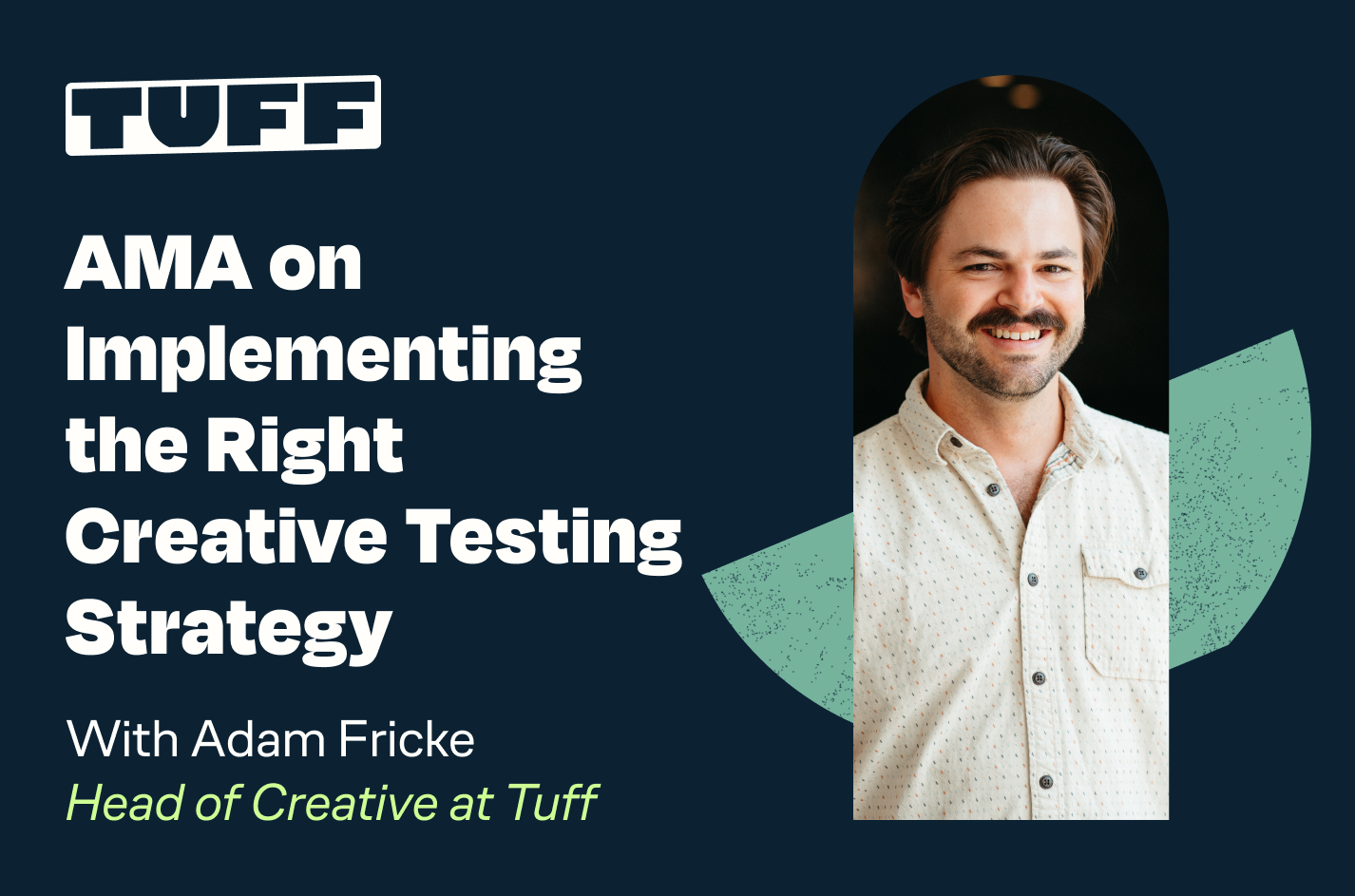What Really Works with Lead Gen?
B2B businesses face a unique challenge when it comes to growth marketing. Generating consistent demand and keeping your pipeline full of qualified leads is the best way to establish successful growth, but how exactly should you approach making that happen?
Do you focus on targeting specific buyers directly with explicitly account-based marketing tactics? Or do you attempt to appeal to a larger audience in the hopes that the right buyers will find you? In the end, it’s all about balance.
If you want to supercharge your lead pipeline, you’re going to have to embrace a variety of tactics across an array of mediums. We created this guide to help you do that. Read on for actionable steps you can take to tweak your strategy in a way that will increase lead generation and support positive, sustainable growth.
Understanding Your Audience
Underpinning every aspect of your strategy should be an understanding of your ideal customer. Once you have a solid grasp on your audience, you’ll be better able to create effective content and understand which channels and tactics best serve your goals of reaching that audience. There are two important elements to doing that.
User Research
You may think that you already know who your customer is. You probably have data that tells you what industry they’re most likely to be in, their general age range, their title, and what problem your product or service solves for them.
That’s all great information to have, but it’s not enough. The picture it paints is, unfortunately, pretty one-dimensional.
If you really want to unlock growth, you’re going to have to get a lot more cozy with your customers. Go beyond the surface. You need to understand how they think.
What motivates them? What are their most trusted sources for information? What questions are they going to ask your team? What will their objections be when it’s time to close the sale? You have to really dig deep!
To do this, you’ll need to engage with your current and past customers. This could include doing phone or email surveys, sorting through past correspondences to gather data, and having in-depth meetings with your customer service and sales teams. The big key here is listening—and not just for what you want to hear, but what your customers are really saying.
We undertook a wide-scope customer research project for our client, The Buy Guys, and found that meshing both a qualitative and quantitative approach unlocked massive hidden potential. After using this deeper customer understanding to implement some changes in the way they communicated with their audience, their leads went up by 138%!
Effective customer research is a big undertaking, but one that is at the core of any successful growth strategy. Once you really pin down who your customer is and how they behave, you’ll know where to meet them and exactly how to speak to them in a way that will both resonate and spur them to action.
Creating Customer Personas
Now that you’ve completed that all-important user research, you can move on to segmenting your customer base by developing personas for each “type” of customer. Having these unified archetypes in place will help your entire team more deeply understand the customer and how to serve them best.
Operating with these personas in mind will affect your organization from top to bottom. They’ll guide product design, as well as help you more effectively organize your campaigns to determine which initiatives will be the most fruitful use of your time and resources. Having solid personas in place also helps the entire team unite around a customer-focused mission.
You’ll use the data you gathered in the research phase to give your personas real depth. Rather than the persona being, “James is a marketing director aged 30 to 35, married with no children, has a college degree,” it will be something more like, “James is a marketing professional with an advanced degree. He looks primarily to industry influencers for his new product recommendations. He has a lot of creative ideas but struggles with efficiency and implementation. He is heavily active on Twitter and Reddit.”
The most important thing about creating personas is capturing that nuance. You want to make this person as real as possible so that you can run scenarios and get results that unlock the best ways to motivate this person to purchase your product or service. That nuance won’t come from assumptions or “gut feelings” about who your audience is, but rather a significant data set and genuine connection with—and understanding of—your customers.
Content
The kind of content you produce as a B2B company is going to be very different from the content a B2C company puts out there. B2B customers tend to be very focused on how investing in your product or service can result in tangible returns for them. You’re not just selling a product to a customer—you’re selling them the promise of increased profits.
The way you approach content marketing, therefore, has to be different too. There are three main points of focus that you need to zero in on as you position your content strategy for optimal growth.
Keyword Research
When businesses are struggling with a pain point and hunting for a solution, the first place most of them will go is the internet. Having your site and related content rank highly on search engines is the best way to get your product or service in front of them in their time of need.
The best way to do that is to crack the keyword puzzle. Finding the perfect set of keywords for your particular business is not a “hunch” game, but rather an involved process of research and testing. There are multiple tools available to conduct this research.
Not only will these tools help you discover keywords you might never have thought of, but they’ll also help you test and determine what’s really worth your money. For instance, your research might uncover that trying to rank highly for seriously competitive short tail terms (think “technology,” “management,” “software,” etc.) isn’t cost-effective. But there may be some long tail keywords with very little competition that you can incorporate into your content to land yourself on page one of the search engine results.
You also want to consider search intent when it comes to choosing your keywords. Do you want to rank highly for informational searches? If your goal is to increase brand awareness, then probably so. Or are you only interested in ranking for transactional intent keywords (meaning that when people search for those terms, they’re ready to buy)?
Consider your audience and your end goal here. Look at the entire picture before determining which keywords you want to go after.
On-Page Optimizations
Optimizing each page on your site will take some time, yes, but it’s worth it. The first step in this process is auditing your technical SEO—in other words, ensuring that your code is top-notch. Make sure that your site is set up in a way that maximizes every possible opportunity for crawlers to index it.
Next, ensure a flawless user experience. Is your site easy to navigate? Does the site load quickly? Does it function fluidly on mobile devices? If not, you’re going to see visitors abandon your site more often, which means you’ll struggle to rank highly on the SERP.
When people click on your link from a keyword search, are they taken to the correct page? If someone has transactional intent and is ready to purchase, but your link for that keyword sends them to your blog, that’s a missed opportunity. If they’re only looking for information about your brand and you send them directly to a product page, they could be turned off. It’s important to consider the customer’s entire journey when you’re organizing your on-page SEO.
Lastly, if you want to rank highly for your desired keywords, you need to make sure they appear throughout your site. This is why keyword research is so important. You don’t want to choose a set of keywords only to have to go back and attempt to shoe-horn them into your site in a way that doesn’t make sense, which leads to our last point.
Consistent, Quality Content
There is nothing more effective for increasing your SERP positioning than becoming a source of trusted content. The more people click on your content, the more it catches the attention of the search engine algorithm. A great way to do that is to embrace the hub-and-spoke approach to aggregating your content.
In this model, you create a central location to house all of your related content around a certain topic (your “hub”) and, from there, link out to pages that contain anything related to that topic (your “spokes”). This method is great for increasing your site’s ranking, as it focuses on providing customers with a broad and deep base of knowledge while also making great use of internal linking and on-page optimization. Search engines also give you a boost because users will spend more time on your site.
Focusing on high-quality content will take an investment of both time and money, but it’s more than worth it when you consider the returns. Finding a way to differentiate your content from that of your competitors is key, so focus on unique content that is hard to duplicate. You can do this by making sure to include relevant and up-to-date data as well as quotes from industry leaders and input from experts in the field.
PPC
The B2B approach to pay-per-click marketing is naturally going to differ a bit from the B2C approach. You probably already realize that, as your audience has a much narrower scope than that of a business selling apparel or consumer electronics. Understanding those differences upfront will help inform your campaign and make it more successful.
How Is B2B Unique?
Your buyers won’t all look alike. Depending on the company, any number of roles might be in charge of procuring products and services to help the business grow (see the Creating Customer Personas section above for more). You must keep that in mind when creating ad creative and copy.
Your buyers are also more likely to be doing heavy comparison shopping, as the purchase will probably be a large investment or an ongoing relationship. You’ll need to do a lot more in the way of proving the value of your product or service, rather than running “deals” or focusing on flashy imagery. You’ll want your paid search terms to lead to things like white papers and case studies that help the buyer see—in black and white, backed up by numbers—why your product is superior.
Lastly, your sales cycle is going to be a lot longer than a B2C cycle. It can take three to six months to see any ROI for a B2B campaign, so don’t get downtrodden if you don’t see immediate results from PPC. They will come!
Executing PPC for B2B
As with any good PPC campaign, your first step is research. You want to make sure you have a deep understanding of your market and, beyond that, how that market operates in a PPC landscape.
Before you go throwing money at paid search, figure out what people are searching for when they find you. Weed out any terms that are leading people to you for products or services that are related to what you sell but aren’t actually in your offerings.
For example, say you sell software for alarm systems but not the associated hardware. You want to make sure people aren’t finding your site when they search “motion detector sensors,” as those would be fruitless clicks that never translate to sales for you.
As for keywords, figure out which search terms are most used in your industry. With B2B companies, acronyms are far more common than in B2C searches. Also, if you sell something with a unique part or model number, that should definitely be in your keyword bank.
It’s useful to think about the customer relationship when choosing keywords, as well. You’ll probably want to toss “vendor,” “supplier,” “tool,” or “partner” into the mix, depending upon how your internal structure is set up.
Next, you’ll want to group your ads into sections corresponding to your sales funnel. The way you market to someone who is just discovering your brand is going to be very different than how you market to someone who is ready to pull the trigger, after all.
For searchers in those early stages, you’ll want your copy to lean on things like white papers and any awards or distinctions your company has earned. For searchers further down the funnel, you may want to drill down into more specifics about your product or service to help make that final conversion.
The Power of Copy
Your approach to ad copy is also going to be unique. B2B companies don’t have the same types of CTAs that a B2C company would have. There is no “buy now!” or “add to cart” in the B2B world.
Very rarely does anyone impulse purchase your product or service. Typically, your buyer undertakes a significant amount of research and will need to have multiple conversations with you and then internally with their own team before making a purchase. Because of this extended sales cycle, your ad copy should focus on phrases like “download our free white paper” or “set up a free consultation today.”
You also want to communicate value to potential buyers effectively. How you do that will differ depending on their role in the company. Are they the CEO? The CFO?
Use your research to create those personas so that your copy reaches them in a more targeted fashion. A CEO, for example, might love to see that your product is “best in class,” whereas the CFO is going to do a double-take when they spot “cost-effective” in your copy.
You can also utilize your ad copy to prequalify leads. When you’re paying per click, this is super important, as it reduces wasteful ad spend.
Your copy should be as specific as possible when it comes to what you offer, since there are so many niche B2B businesses. By showcasing the exact product/service and maybe even mentioning a price range (e.g., “With packages starting at $250 . . .”), you’re weeding out anyone who isn’t looking for exactly what you’re selling and/or can’t afford what you’re charging. This means that everyone who clicks on that link will be a quality lead.
Set It and Forget It?
The last step to take with your PPC strategy is to make time for regular evaluations of it. Best practices and search algorithms are changing at a rapid pace. Not only do you want to make sure that you’re getting a solid return on the time and effort you’ve spent to build these campaigns, but you want to make sure you’re always using the most current and up-to-date tools at your disposal so that you can get the most bang for your buck!
Paid Social
Social media is a massive sales driver for the B2C business sector, but a lot of B2B companies have avoided really entering the fray. And we understand why: Brands selling skincare or sparkling jewelry likely benefit from a highly visual and enticing medium like social, but if you’re selling group health insurance or wholesale auto parts, it can be hard to imagine how Instagram could help you find new business.
But no matter how unsexy or “boring” your industry might feel, there are people active on social media who would be interested in buying your product or service. Again, it’s about doing the research and finding a way to connect with them.
Goals and Strategy
First, you need to determine what you want to get out of this and how you’ll measure your success in that regard. Do you want to increase awareness? Then you’ll keep an eye on your follower count.
Or maybe what you want is engagement. In that case, keep tabs on how many “likes” and “shares” each post receives. Ultimately, the goal is more conversions, of course, but laying the groundwork for how to get there is vital.
Once you’ve established your goals, you need to commit to a strategy (and write it down!). Identify your target audience, and consider what type of content they would want to see. Even if it’s not 100% specific to purchasing your product or service, if you’re providing them with quality content that is relevant to their daily life, they’re going to engage with your brand more. Don’t forget to take a look at what your competitors are doing on social as well, including what is and isn’t working for them.
Brand Voice
A big part of executing a paid social strategy for B2B companies is not being dry. People log into social media to relax and converse with friends. Being stale or robotic is a great way to get them to scroll right past your ad.
Create a persona for your brand on social, and stick to it. Are you playful and a bit cheeky? Motivational and inspiring? Authentically and genuinely passionate about what you do? Positioning yourself as an industry trendsetter or forward-thinker?
Whatever fits your brand best, embrace that voice, and then use it to engage with other users about things other than your products or services. Provide value for the community by sharing about initiatives you’re undertaking or trends in your industry that you find interesting. Be warm and personable, and show people the humanity behind the keyboard.
Where to Be, What to Do, and Who Should Do It
Determine in the research phase where your strongest following will be and focus your attention on those channels. While for many B2B businesses, this is LinkedIn, don’t discount having a presence on other channels as well.
YouTube and Vimeo can be great channels for video content that showcases your products and tells your brand’s story. And Twitter and Facebook have an astonishing number of users who are active every day.
Look at where your industry’s leaders are present and thriving to get some ideas of where you might be successful. Look at the demographics for the top platforms. But be wary of stretching yourself too thin; only take on what you can effectively manage. It’s better to not be on a channel than to be there and do nothing.
Once you’ve got yourself set up in the right spots, you can begin rolling out your strategy. Encourage your employees to be advocates and share the brand’s posts on their personal social profiles. Connect with other users who are looking for solutions in your wheelhouse.
Don’t just link your products over and over, either. Really engage in conversations with people, and provide resources (both internal and external to your company). This will situate you as an expert and help build a relationship of trust between you and the user, making it more likely that when they go shopping for a solution, they’ll remember your name.
Lastly, you want to make sure the right person in your company is holding the reins on this. While most people these days use social media, that doesn’t mean they can manage a business account effectively. An understanding of the industry does not translate to being able to use this medium to generate new leads.
If no one on your team has experience or is eager to take on social, you may need to make a new hire. If you don’t have it in the budget to hire a social media manager, consider working with an agency or freelancer to help you out. In a world where social media dominates the conversation, it’s essential that your company be present and engaging.
We hope this guide has been helpful to you as you work towards increasing quality lead generation for your B2B business. We know it seems like there are a lot of moving parts. But with proper research, planning, and testing, these tips can really help you elevate your business and put you on a path towards solid growth.
B2B businesses have very different needs when it comes to growth strategy. But don’t let that prevent you from chasing down avenues to expand your business and increase your profits.
We’d love to work with you.
Schedule a call with our team and we’ll analyze your marketing, product, metrics, and business. Then, present a Growth Plan with actionable strategies to find and keep more engaged customers.

Ellen is the founder at Tuff and one of the team’s core growth marketers. She is a versatile marketer with expertise in multiple channels – from ppc to seo to email to others – responsible for the experiments and testing. She is happiest when she’s on the ski hill or outside pointing her mountain bike downhill.





